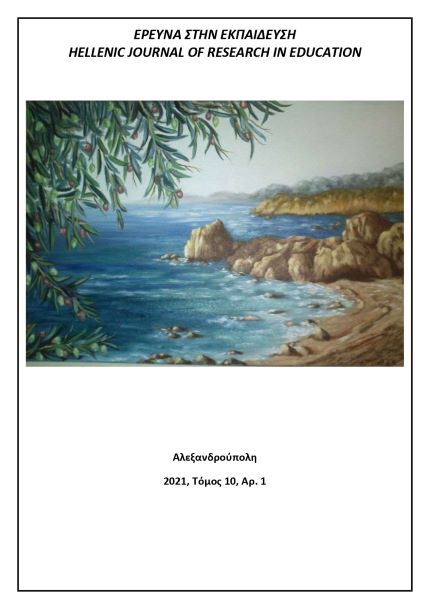Image analysis model for primary school students: a tool for promoting critical visual literacy

Abstract
This article presents a systematic teaching intervention to introduce young primary school students to reading pictures. This approach, which is an action research, took place in the context of cultural programs, implemented during Flexible Zone sessions, in the 1st and 2nd grade at a primary school in Western Thessaloniki. The group of students who participated in this research is stable, as the action-intervention evolved from one school year to another. The textual material used was drawn on the one hand, from the illustrations of the most popular fairy tales of the first graders and, on the other hand, from the favorite paintings of the second graders. The popularity of the text material emerged through short interviews with children. Immersion in images was based on the model of Kress & van Leeuwen, which the teacher-researcher transformed into a model of image analysis for children, in order to make it accessible to her young students. Also, during the visual analysis, the researcher took into account social semiotics, so that image reading could take on a critical character. Finally, for a more effective image study, the researcher created a list of visual speech patterns. The approach was activity-oriented, always using as a departure point an image, which was the basis for oral critical interactions, while the teaching was further enriched with theatrical games and pictorial work/artwork (drawings). The evaluation of the interventions proved that the approach adopted was effective for the young students, as they were able to decode the images and gain insights into them. The main conclusion of this research was that the image that corresponds to either a book illustration or a painting serves as a valuable and multifaceted teaching visual tool, as its proper use contributes primarily to the promotion of visual literacy and critical visual awareness, as well as it sharpens critical thinking and helps students produce rich oral speech in various forms (description, narration, argumentation, explanation). Furthermore, it is a unique source of inspiration for theatrical events and artistic creations, in a context of constructing and reconstructing the original visual text.
Article Details
- How to Cite
-
Καραγιαννάκη Ε. (2021). Image analysis model for primary school students: a tool for promoting critical visual literacy. Hellenic Journal of Research in Education, 10(1), 116–136. https://doi.org/10.12681/hjre.26705
- Issue
- Vol. 10 No. 1 (2021)
- Section
- Articles

This work is licensed under a Creative Commons Attribution-NonCommercial-ShareAlike 4.0 International License.
Authors who publish with this journal agree to the following terms:
- Authors retain copyright and grant the journal right of first publication with the work simultaneously licensed under a CC-BY-NC-SA that allows others to share the work with an acknowledgement of the work's authorship and initial publication in this journal.
- Authors are able to enter into separate, additional contractual arrangements for the non-exclusive distribution of the journal's published version of the work (e.g. post it to an institutional repository or publish it in a book), with an acknowledgement of its initial publication in this journal.
- Authors are permitted and encouraged to post their work online (preferably in institutional repositories or on their website) prior to and during the submission process, as it can lead to productive exchanges, as well as earlier and greater citation of published work (See The Effect of Open Access).


